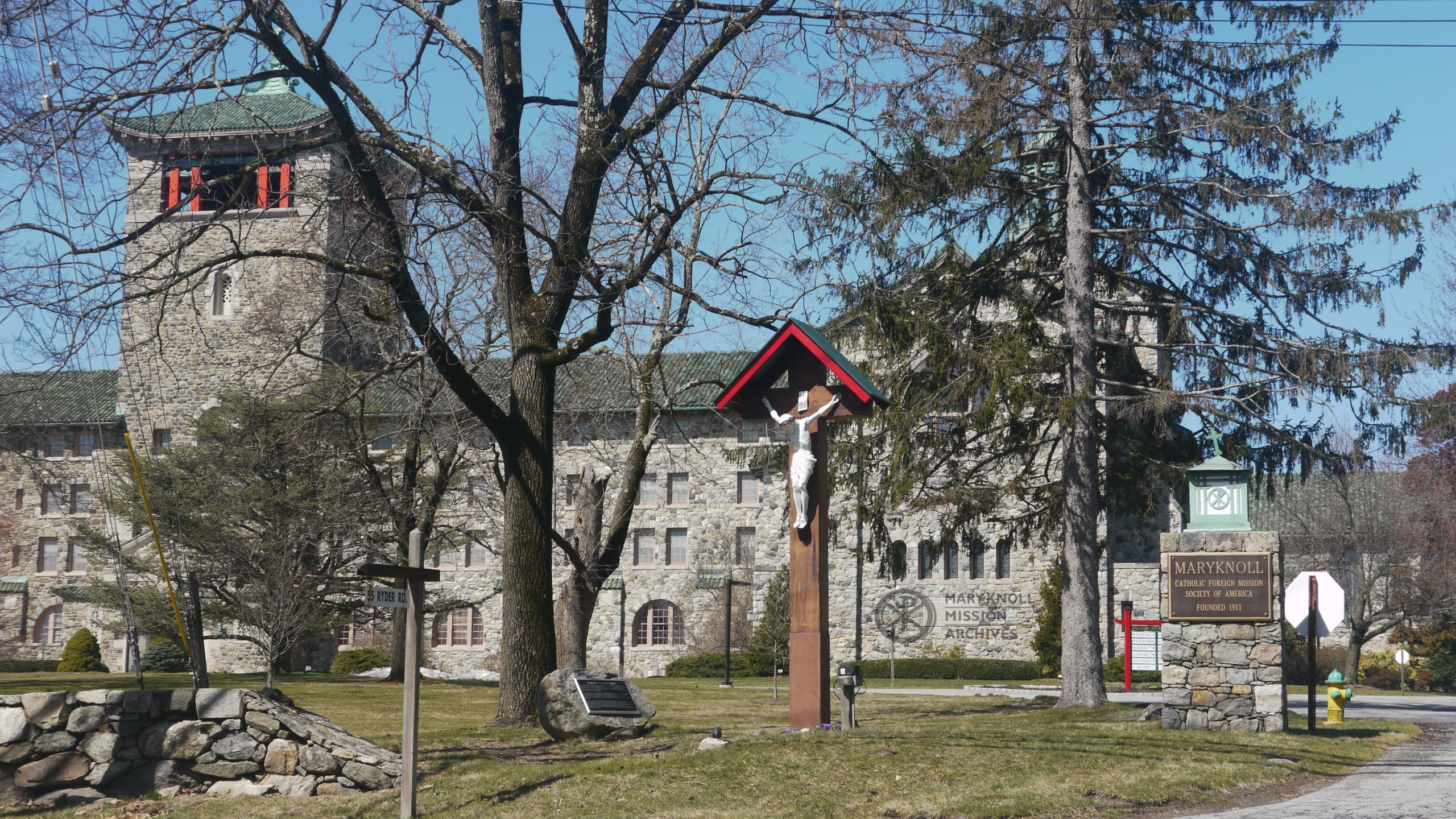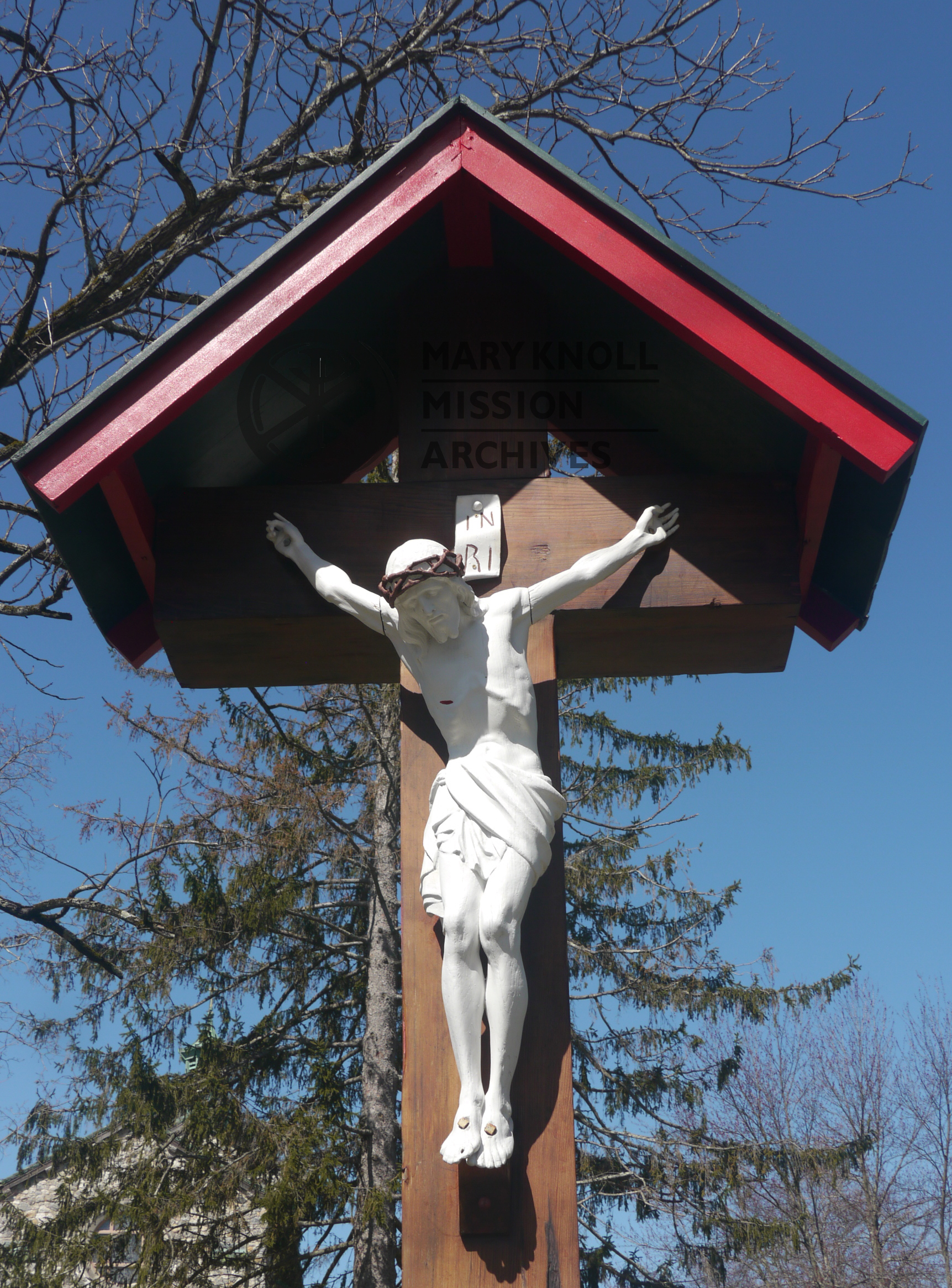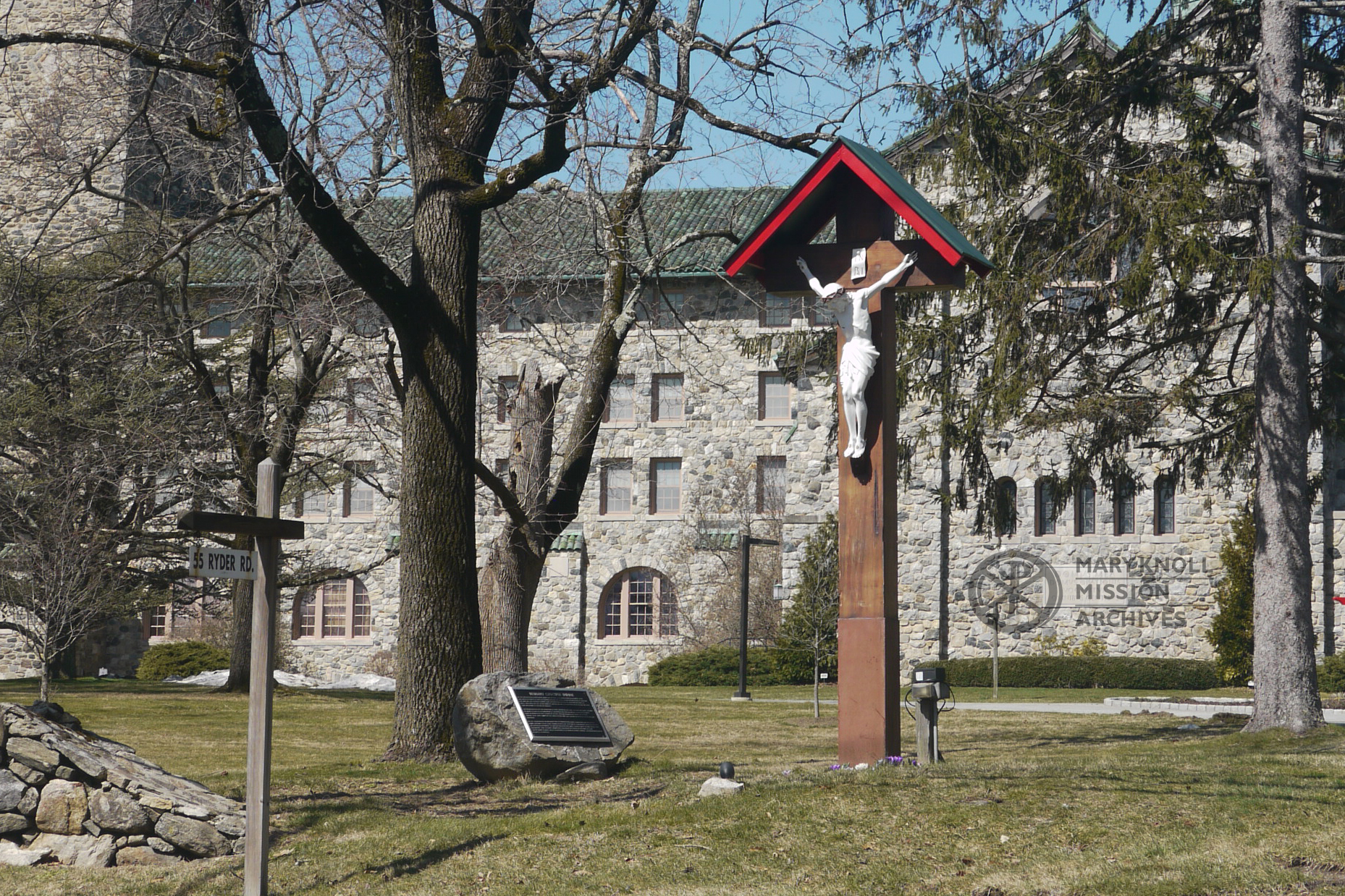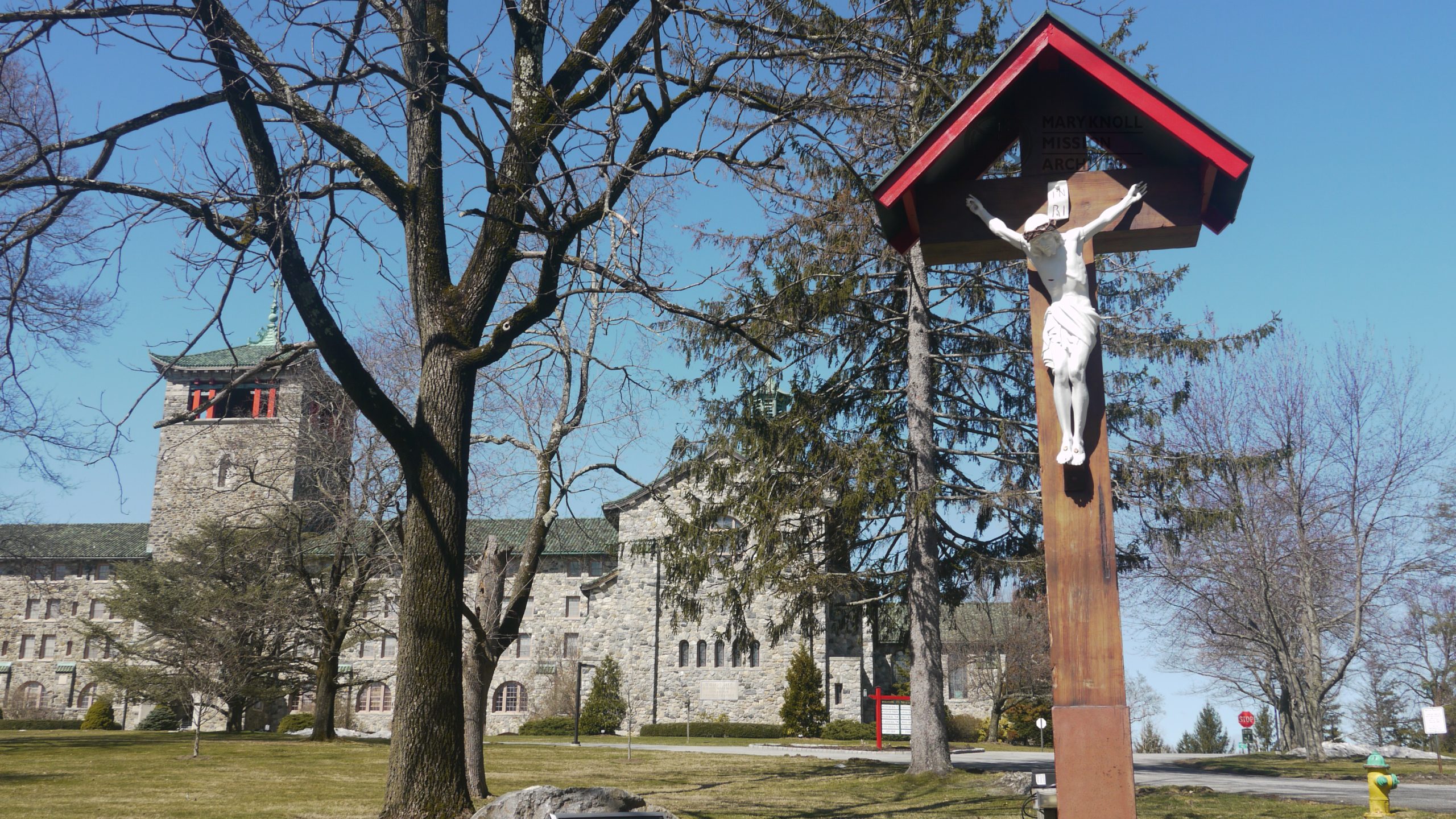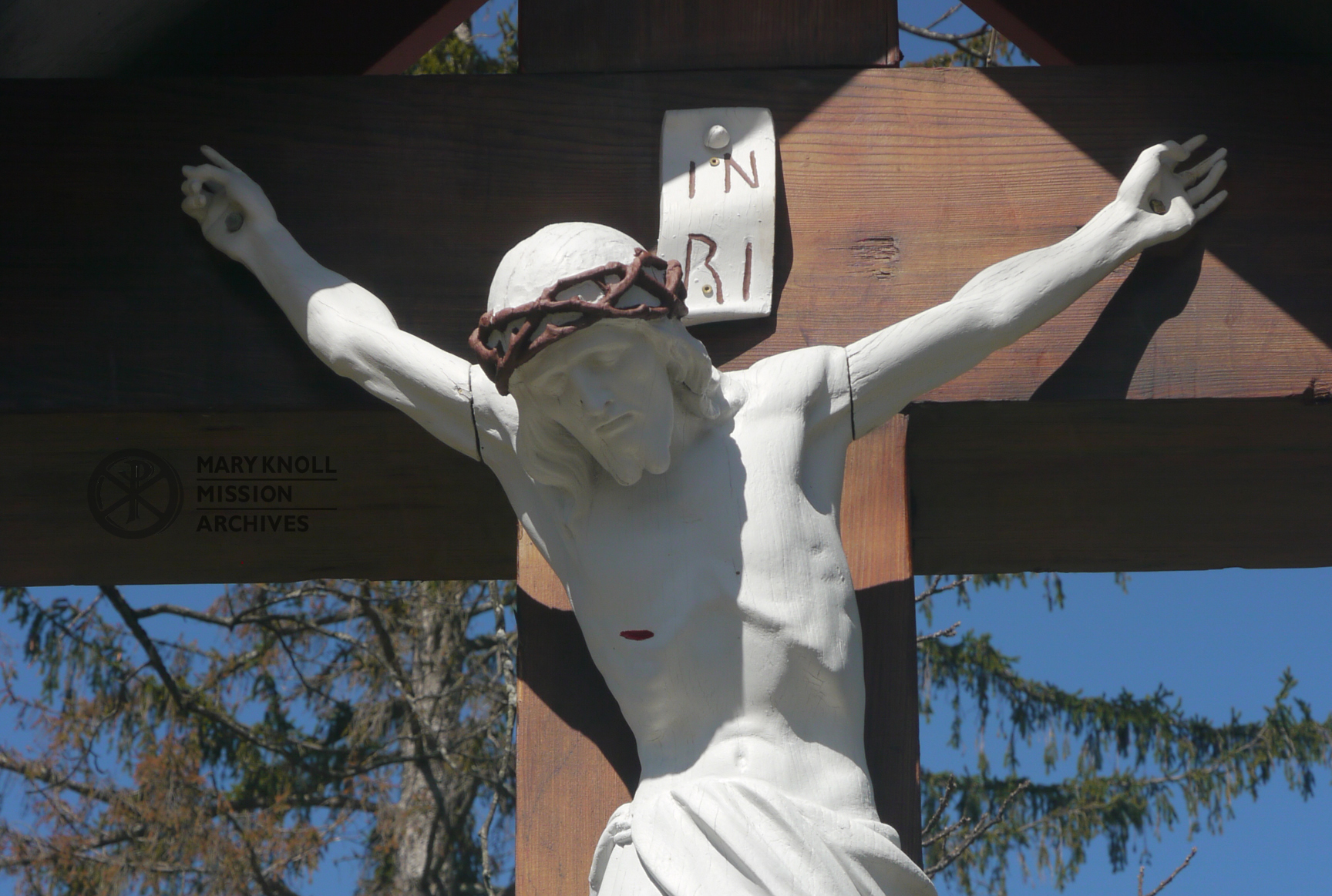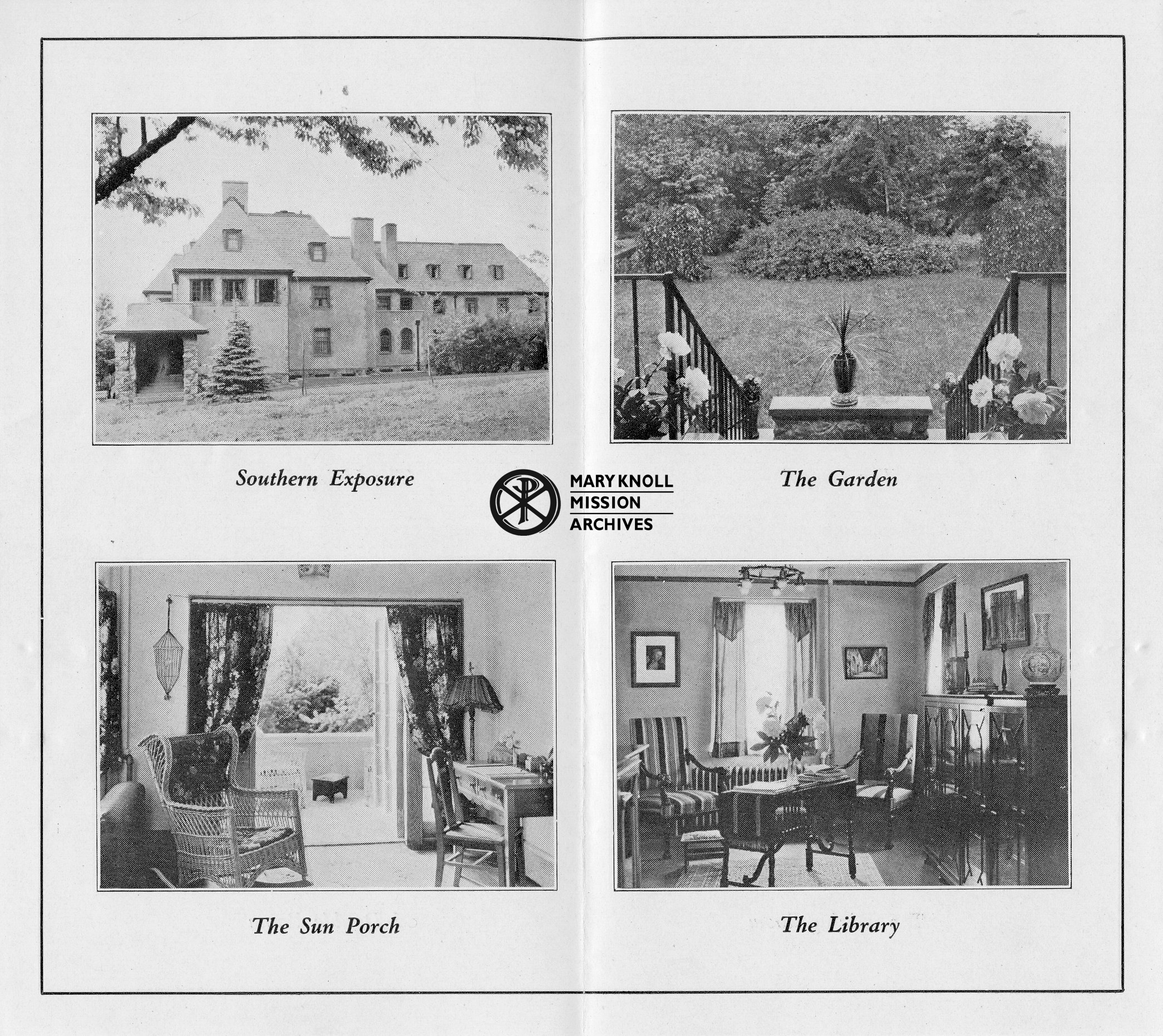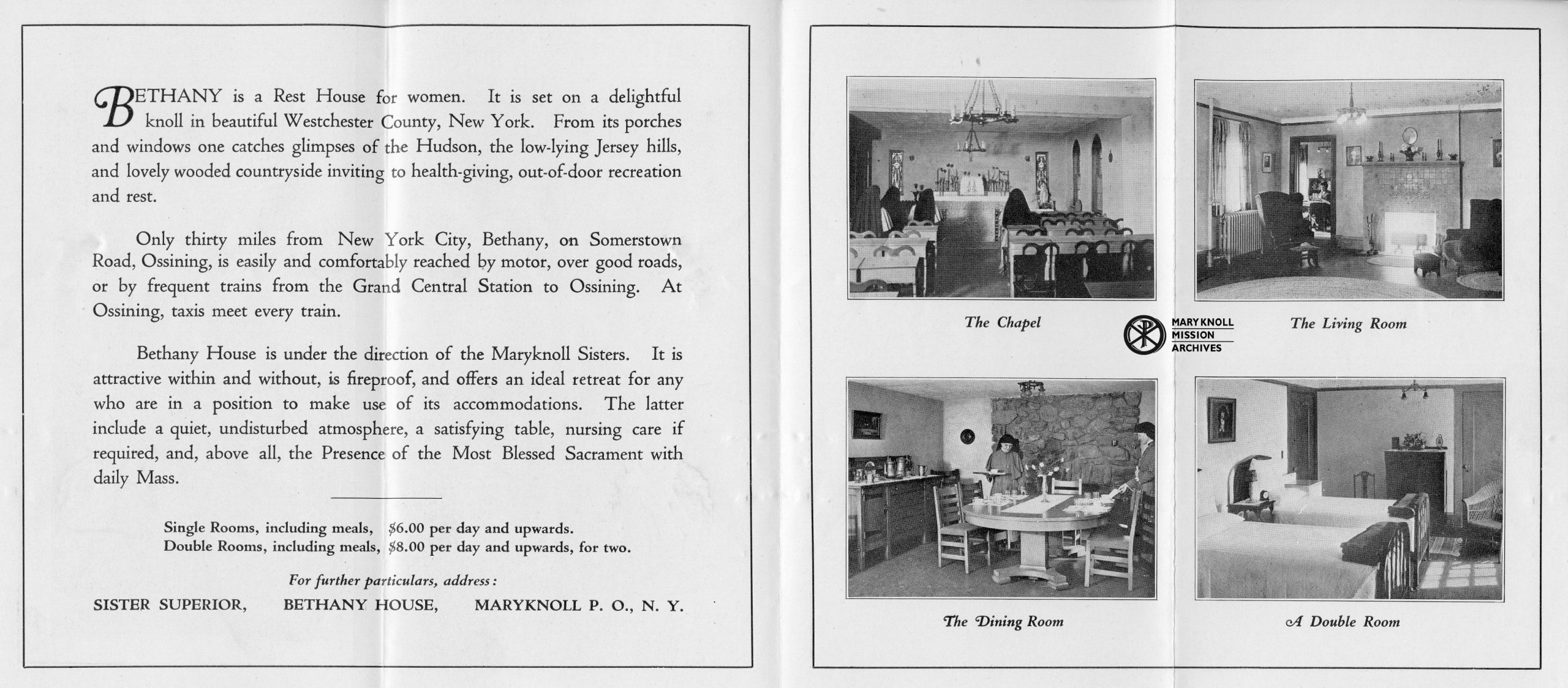When History Gets Damaged
On Monday, April 17th, Maryknoll employees drove in to work and discovered the Crucifix Shrine was laying down on the Seminary building’s front lawn. The Shrine had been involved in a car accident over the weekend. While the cross was still intact, the attached Corpus (or body of Jesus) sustained serious damaged.
What do we do when historical artifacts are damaged?
We start by assessing our options.
Can the Crucifix Shrine be repaired?
No, the Corpus is too damaged to be rebuilt.
Can a replica of the Corpus be made?
Maybe. A replica would be expensive though.
Can we preserve and share the history of the Crucifix Shrine?
Absolutely! Moments like this are why Archives exist. We protect and preserve history so it remains accessible to people at a later date.
Even though the Corpus is gone, it lives on through photographs and records at Maryknoll Mission Archives. Since the accident, we’ve been piecing together its unique story to share with everyone.
Bethany Crucifix Shrine Plaque
Thankfully for us, someone already did research to help us get started. There is a plaque nearby the shrine’s former location at the Seminary.
The Bethany Crucifix Shrine plaque states:
In 1925, the Maryknoll Sisters bought the Bethany property at 40 Somerstown Road, Ossining, where this crucifix stood for 79 years. It was in mid-1936 that the Corpus was imported from Italy. It arrived in late April just after the death of Bishop James Anthony Walsh. Noted in the Sisters’ Bethany diary on May 2, “The Corpus for our Crucifix Shrine has arrived and one of the Brothers who is to make the cross came this morning to take the measurements.”
Although it is not known which Maryknoll Brother constructed the cross, attached the Corpus, and built the Shrine, it is likely to have been either: Br. Thaddeus Revers who had been the Chauffeur for Bishop Walsh, Br. Rene Dawson who constructed the first cross in the Maryknoll Fathers and Brothers Cemetery, or Br. Albert Staubli who was on leave from China and constructed the kiosk during the same time period.
In 1978, the Sisters sold the Bethany property to the Maryknoll Fathers and Brothers and the Crucifix Shrine continued to stand along the driveway up to the original part of the building. From 1979 to 2012, the Maryknoll Lay Missioners also used the Bethany property, first as their training site and later as their Headquarters. When the Fathers and Brothers sold the Bethany property in September 2015, this Crucifix Shrine was relocated to the entrance of the Seminary grounds where it continues its long history of service to Maryknoll.
Using the hints and clues from the plaque, we established the history of the Crucifix Shrine.
Dear Readers,
Please don’t believe everything that you read! Here at the Maryknoll Mission Archives, all of our blog posts go through a rigorous research and confirmation process before anything gets published. We only publish information that we can verify as factual. Any theories, ideas, and personal opinions in our posts are clearly marked as such.
It is best practice to verify information sources. We’ve come across plaques, monuments, headstones, etc. with errors on them. Mistakes happen! By confirming the plaque’s accuracy, we learned more about the Crucifix Shrine than we could have otherwise.
Don’t be afraid to ask questions and check facts.
Happy reading,
Maryknoll Mission Archives
Crucifix Shrine at Bethany, ca. 1936-1945
Photograph from album created by Sr. Madeline Dorsey
Bethany Gleanings
Three diary entries about the Crucifix Shrine were located in Bethany Gleanings, the Sister’s house diary at the Bethany estate.
Originally known as “Bethany Rest House”, its doors were open to women in need of rest and recuperation. By July 31, 1936, it had grown so popular with New Yorkers, New Englanders, and tourists it was simply known as “Bethany”. Families and tour buses traveled here to witness the beautiful scenery and enjoy the Sisters’ generous hospitality. The Crucifix Shrine stood at the end of the driveway, welcoming visitors home.
April 15, 1936
Joe and Mrs. Donohue spent a busy day making rough places smooth and planting hydrangeas and other attractive shrubs on the lawn beside the cut flower garden where a Crucifix Shrine is soon to be erected. The Corpus is coming from Italy and is expected today.
May 2, 1936
The Corpus for our Crucifix Shrine has arrived and one of the Brothers who is to make the cross came this morning to take the measurements.
June 27, 1937
At about 4:30 [pm] Bishop [James E.] Walsh came over and blessed the outdoor Crucifix Shrine. Benches were arranged handy to the Crucifix and all were seated while Father gave a beautiful talk. Benediction followed. Father Cotta was on hand and a few splendid pictures were taken. Supper was served, picnic style, to our guests and then followed our own picnic supper. Mother, the Council, and all the Sister Delegates now home joined us and we had a delightful and prolonged supper.
Building the Crucifix Shrine
Entries from the Bethany Gleanings diary helped us determine the Crucifix Shrine was built and installed sometime between May 2, 1936 and June 27, 1937. At this point in time, the Brothers were still responsible for helping Sisters with any construction projects happening at their facilities. Sisters’ diary entry on May 2 also confirms this. Unfortunately, the Fathers and Brothers Center diaries don’t mention the Crucifix Shrine at all.
Determining who might have constructed the Shrine came down to a process of elimination. Which Brothers were in Ossining during this time, and who had the necessary skills to accomplish this task? We came up with the same names listed on the plaque:
Br. Thaddeus Revers, Br. Rene Dawson, and Br. Albert Staubli.
My current theory is that all three Brothers helped assemble the Crucifix Shrine, and the May 2 diary entry supports this theory. It states that, “one of the Brothers who is to make the cross came this morning”, implying that more than one individual could have been responsible for the project. Many hands make light work, and the Shrine would have taken more than one person to safely install in the ground. That seems logical to me, but we don’t have enough information to prove what actually happened.
The Watcher at the Crossroads
From 1938 through 2015, the Shrine’s history is the Bethany property’s history. The property was sold to the Maryknoll Fathers and Brothers in 1978. While under their care, the property became a training facility for Lay Missioners. Finally, it became the Maryknoll Lay Missioners’ Headquarters. Through all of these changes, the Crucifix Shrine remained a constant presence at the foot of the drive, watching the comings and goings of Maryknollers and visitors alike.
There is a strong absence of records about the Crucifix Shrine across its lifetime, but that makes sense. The Shrine remained unmoved and undamaged for 79 years. No catastrophic events happened to the installation, so there was nothing new to document.
It wasn’t until September 2015 that its constant vigil was altered. The property was sold again, and became home to the Bethany Arts Community. Now a thriving hub of creativity, this non-profit organization offers a full calendar of events for people of all ages. From art workshops, musical performances, dance classes, and film exhibitions, all levels and types of artists are welcome and encouraged to engage with the community. While the Crucifix Shrine is a unique piece and could have fit in with this artistic organization, Maryknoll Fathers and Brothers decided to keep this piece of Bethany’s religious history.
Goodnight, Sweet Prince
All things must come to an end. The tragic ending of the Crucifix Shrine is heartbreaking because it stood vigil for 87 years and, had things been different, could easily have stood for at least 87 years more. The end of its existence came much sooner than expected. However, as long as the Maryknoll Mission Archives exists, its history will remain. We hope the community will continue to support our work so that we can protect and preserve the stories of Maryknoll’s people, records, and artifacts for years to come.
Interested in learning more about Maryknoll? You can contact the Archives at:
Maryknoll Mission Archives
PO Box 305, Maryknoll, New York 10545
Phone: 914-941-7636
Office hours: 8:30 am-4:00 pm Monday-Friday
Email: archives@maryknoll.org
Website: www.maryknollmissionarchives.org
References:
Bethany Arts Community, Inc. announced its purchase of a 25 acre property from the Maryknoll Fathers and brothers. Bethany Arts Community. (2015, December 23). Retrieved from https://bethanyarts.org/bethany-arts-community-inc-announced-its-property-purchase-from-the-maryknoll-fathers-and-brothers/
Bethany Arts Community. (2023, April 20). Get involved in the arts at Bethany Arts community in Ossining, New York. Bethany Arts Community. Retrieved from https://bethanyarts.org/
Bishop James A. Walsh. Maryknoll Mission Archives. (2019, July 25). Retrieved from https://maryknollmissionarchives.org/bishop-james-a-walsh/
Bishop James E. Walsh, MM. Maryknoll Mission Archives. (2016, September 29). Retrieved from https://maryknollmissionarchives.org/deceased-fathers-bro/bishop-james-e-walsh-mm/
Brother Albert Staubli, MM. Archives. (2014, April 17). Retrieved from https://maryknollmissionarchives.org/deceased-fathers-bro/brother-albert-staubli-mm/
Brother Thaddeus Revers, MM. Maryknoll Mission Archives. (2014, April 23). Retrieved from https://maryknollmissionarchives.org/deceased-fathers-bro/brother-thaddeus-revers-mm/
Brother Thomas R. Dawson, MM. Maryknoll Mission Archives. (2014, April 17). Retrieved from https://maryknollmissionarchives.org/deceased-fathers-bro/brother-thomas-r-dawson-mm/
Di Silvestro, J. (2013). Properties and grounds collection, 1912-2019. Maryknoll Mission Archives. Retrieved from https://maryknollmissionarchives.libraryhost.com/index.php?p=collections%2Ffindingaid&id=78&q=bethany&rootcontentid=310421#id310421
Father Anthony Cotta, MM. Maryknoll Mission Archives. (2014, April 17). Retrieved from https://maryknollmissionarchives.org/deceased-fathers-bro/father-anthony-cotta-mm/
Halloran, J. (2013). Mission diaries, 1912-1968. Maryknoll Mission Archives. Retrieved from https://maryknollmissionarchives.libraryhost.com/index.php?p=collections%2Ffindingaid&id=4&q=&rootcontentid=234527#id234527
Sister Madeline Dorsey, MM. Maryknoll Mission Archives. (2021, October 6). Retrieved from https://maryknollmissionarchives.org/deceased-sisters/sister-madeline-dorsey-mm/

